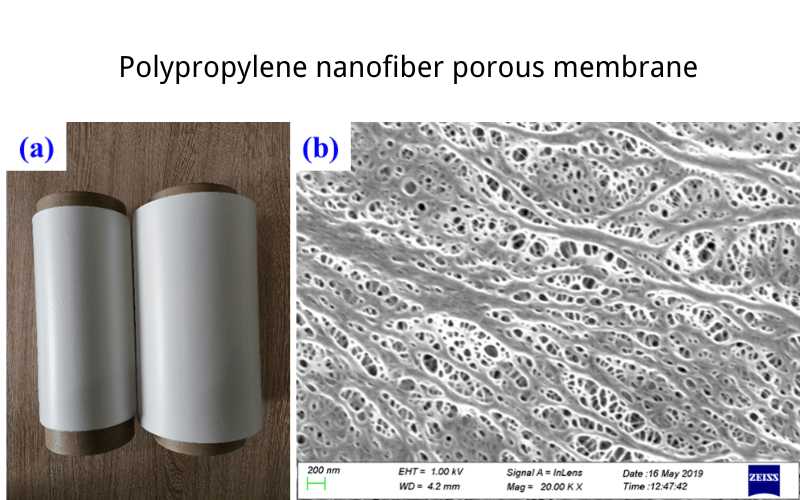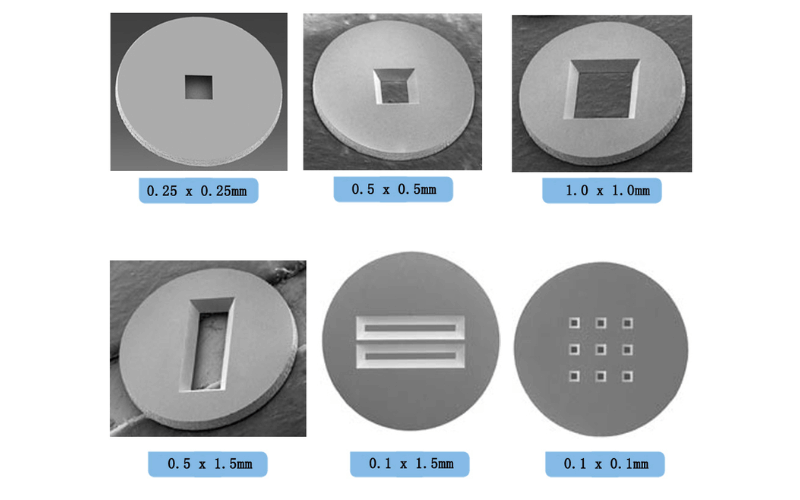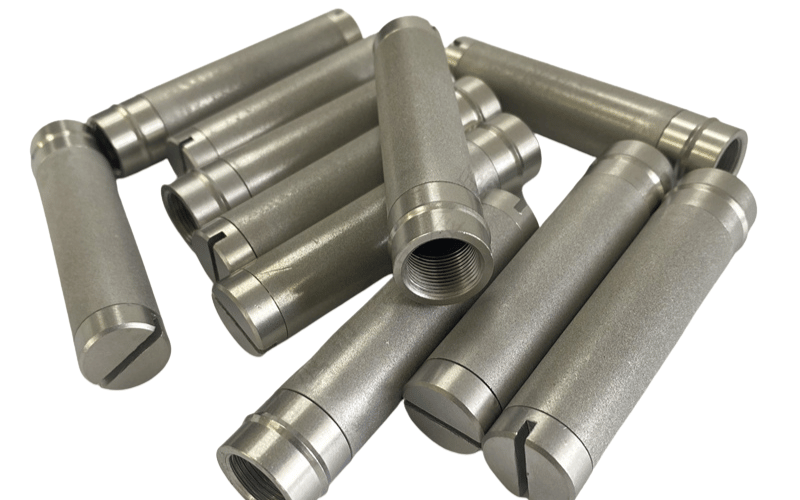Porous membrane technology has become a cornerstone in various industries, offering innovative solutions for filtration, separation, and purification processes. These membranes, characterized by their microscopic pores, enable selective separation of substances based on size, shape, or chemical properties. This section explores the definition of porous membranes, the significance of polymer-based membranes, and provides a comprehensive overview of the technologies that utilize these materials.
Table of Contents
ToggleDefinition of Porous Membranes
Porous membranes are thin, permeable materials with a network of microscopic pores that allow certain substances to pass through while blocking others. Their functionality is determined by factors such as pore size, distribution, and material composition. These membranes are widely used in applications like water treatment, gas separation, and medical devices due to their ability to achieve precise filtration and separation.

Key characteristics of porous membranes include:
- Pore Size Variability: Ranging from microfiltration to nanofiltration, they cater to diverse separation needs.
- Material Versatility: Available in polymeric, ceramic, and metallic forms, each suited for specific applications.
- Selective Permeability: Designed to allow the passage of specific molecules while retaining unwanted particles.
Importance of Polymeric Membranes
Polymeric membranes are among the most commonly used types due to their flexibility, cost-effectiveness, and adaptability. These membranes are typically made from materials like polypropylene, polyethylene, and polyvinylidene fluoride (PVDF). Their importance lies in their ability to strike a balance between performance and affordability, making them suitable for large-scale industrial and commercial applications.
Advantages of polymeric membranes include:
- Chemical Resistance: Effective in handling a wide range of chemicals.
- Scalability: Easily manufactured for large-scale use.
- Customizability: Tailored to meet specific filtration and separation requirements.
Overview of Membrane Technologies
Membrane technologies encompass a variety of processes that leverage porous membranes for separation and purification. These technologies are integral to industries such as water treatment, pharmaceuticals, and food processing. Common types include:
- Microfiltration: Removes larger particles like bacteria and suspended solids.
- Ultrafiltration: Targets smaller particles, including proteins and viruses.
- Nanofiltration: Used for separating dissolved salts and organic molecules.
- Reverse Osmosis: Achieves the highest level of filtration, removing ions and small molecules.
By understanding the fundamentals of porous membranes, the role of polymeric materials, and the range of membrane technologies, industries can harness these tools to optimize processes and achieve efficient separation solutions.
Understanding Silicon Nitride Membranes
Silicon nitride membranes are advanced materials that have gained prominence in various high-performance applications due to their unique combination of properties. These membranes, made from silicon nitride, are known for their exceptional strength, thermal stability, and chemical resistance. This section explores the key properties of silicon nitride, the benefits of using it as a membrane material, and its diverse applications in filtration and venting technologies.

Properties of Silicon Nitride
Silicon nitride is a ceramic material characterized by its remarkable mechanical and thermal properties. These attributes make it an ideal choice for demanding environments where durability and reliability are critical. Key properties include:
- High Strength: Silicon nitride exhibits excellent mechanical strength, allowing it to withstand significant stress without deformation.
- Thermal Stability: It maintains its structural integrity at high temperatures, making it suitable for applications involving extreme heat.
- Chemical Resistance: The material is resistant to corrosion and chemical degradation, ensuring long-term performance in harsh environments.
- Low Density: Despite its strength, silicon nitride is lightweight, which is advantageous for applications requiring minimal weight.
Advantages of Silicon Nitride Membrane Materials
Silicon nitride membranes offer several benefits that set them apart from other materials used in similar applications. These advantages include:
- Precision and Uniformity: The membranes can be engineered with highly uniform pore sizes, enabling precise filtration and separation.
- Durability: Their resistance to wear and chemical attack ensures a longer lifespan compared to polymeric or metallic alternatives.
- Thermal Performance: Silicon nitride membranes can operate effectively in high-temperature environments without compromising performance.
- Biocompatibility: In certain applications, such as medical devices, silicon nitride’s biocompatibility makes it a preferred choice.
Applications in Filtration and Venting
Silicon nitride membranes are utilized in various industries due to their robust performance and adaptability. Common applications include:
- Gas Filtration: Their ability to withstand high temperatures and corrosive gases makes them ideal for industrial gas filtration systems.
- Liquid Filtration: Silicon nitride membranes are utilized in processes that require the precise separation of particles from liquids, such as those found in chemical processing.
- Venting Solutions: Their durability and chemical resistance make them suitable for venting applications in electronics and automotive components.
- Medical Devices: The material’s biocompatibility and precision make it valuable in medical filtration and diagnostic equipment.
By understanding the properties, benefits, and applications of silicon nitride membranes, industries can leverage this advanced material to enhance performance and reliability in critical processes.
Filtration Mechanisms and Performance
Filtration mechanisms play a crucial role in various industries, enabling the precise and efficient separation of particles, liquids, and gases. The performance of filtration systems is influenced by factors such as pore size, material composition, and the specific application requirements. This section examines the relationship between pore size and permeability, compares microporous and micro-porous membranes, and explores advanced gas separation techniques.
Pore Size and Permeability Factors
Pore size is a key determinant of a membrane’s filtration capabilities, directly affecting its permeability and selectivity. Smaller pores provide finer filtration but may reduce flow rates, while larger pores allow higher permeability but may compromise separation efficiency. Important considerations include:
- Pore Size Distribution: Uniform pore sizes ensure consistent filtration performance, minimizing the risk of bypass or inefficiency.
- Material Composition: The choice of membrane material impacts its ability to maintain pore structure under varying pressures and temperatures.
- Permeability vs. Selectivity: Achieving a balance between high permeability and adequate selectivity is crucial for optimizing filtration performance.
Microporous vs. Micro-porous Membranes
Although often used interchangeably, microporous and micro-porous membranes can differ in their structural characteristics and applications:
- Microporous Membranes: These membranes feature pores typically smaller than 2 nanometers, making them suitable for applications requiring ultra-fine filtration, such as reverse osmosis or gas separation.
- Micro-porous Membranes: With slightly larger pores, these membranes are ideal for processes like microfiltration, where the removal of larger particles or contaminants is required.
- Application-Specific Use: The choice between microporous and micro-porous membranes depends on the desired filtration precision and the operating environment.
Gas Separation Techniques
Gas separation membranes are designed to selectively allow certain gases to pass through while retaining others, based on differences in molecular size, solubility, or diffusivity. Key techniques include:
- Pressure-Driven Separation: High-pressure systems force gases through membranes, separating components based on their permeability.
- Selective Permeation: Membranes with specific chemical properties enhance the separation of gases like oxygen, nitrogen, or carbon dioxide.
- Applications: Gas separation membranes are widely used in various industries, including energy, healthcare, and environmental management, for tasks such as carbon capture, oxygen enrichment, and hydrogen recovery.
By understanding the interplay between pore size, membrane structure, and separation techniques, industries can optimize filtration systems to meet specific performance requirements and achieve efficient and reliable results.
Fabrication of Porous Polymeric Membranes
The fabrication of porous polymeric membranes is a crucial process that significantly influences their performance, durability, and suitability for various applications. These membranes are widely used in industries such as water treatment, gas separation, and medical devices due to their versatility and efficiency. This section examines the methods employed to produce polymeric membranes, recent advancements in fabrication techniques, and the challenges encountered during manufacturing.
Methods for Creating Polymeric Membranes
Several techniques are employed to fabricate porous polymeric membranes, each tailored to achieve specific pore structures and properties. Common methods include:
- Phase Inversion: A widely used technique where a polymer solution is cast into a film and immersed in a non-solvent, causing the polymer to solidify and form a porous structure.
- Stretching: This method involves mechanically stretching a polymer film to create pores, which is often used for membranes requiring uniform pore sizes.
- Electrospinning: A process that uses an electric field to produce ultrafine polymer fibers, resulting in membranes with high porosity and fine filtration capabilities.
- Track-Etching: In this method, a polymer film is exposed to radiation, followed by chemical etching to create precise, uniform pores.
Innovations in Membrane Fabrication
Advancements in technology have led to innovative approaches in membrane fabrication, improving their efficiency and expanding their applications:
- Nanotechnology Integration: Incorporating nanoparticles into polymer matrices enhances membrane properties, including resistance to fouling, permeability, and selectivity.
- 3D Printing: Additive manufacturing techniques allow for the creation of complex membrane structures with customized pore geometries.
- Green Fabrication Methods: Sustainable approaches, such as utilizing biodegradable polymers and minimizing solvent usage, are gaining momentum in the production of membranes.
Challenges in Manufacturing Porous Membranes
Despite advancements, the fabrication of porous polymeric membranes presents several challenges that can impact their performance and scalability:
- Pore Uniformity: Achieving consistent pore size and distribution is critical for reliable filtration, but can be challenging to control during manufacturing.
- Material Limitations: The choice of polymer affects the membrane’s chemical and thermal resistance, limiting its use in specific environments.
- Fouling and Durability: Membranes are prone to fouling, which reduces efficiency and lifespan, necessitating the development of anti-fouling coatings or materials.
- Cost Efficiency: Balancing high performance with cost-effective production remains a significant challenge, particularly for large-scale applications.
By understanding the methods, innovations, and challenges in fabricating porous polymeric membranes, industries can continue to refine production techniques and develop membranes that meet evolving performance demands.
Future Trends in Membrane Technologies
Membrane technologies are continuously evolving to meet the growing demands of industries such as water treatment, energy, and healthcare. Innovations are focused on improving efficiency, expanding applications, and overcoming existing limitations. This section examines advancements that aim to enhance membrane performance, the potential of silicon nitride membranes in emerging applications, and strategies to address persistent challenges in filtration systems.
Enhancing Membrane Efficiency
Improving the efficiency of membranes is a key focus area, with efforts directed toward optimizing performance and reducing operational costs. Key advancements include:
- Advanced Materials: The development of hybrid membranes that combine polymers with nanoparticles or ceramics enhances properties such as permeability, selectivity, and fouling resistance.
- Energy-Efficient Processes: Innovations such as low-pressure filtration systems and energy recovery devices are reducing the energy consumption of membrane operations.
- Smart Membranes: Responsive membranes that adapt to environmental conditions, such as temperature or pH, are being developed to improve process control and efficiency.
Emerging Applications of Silicon Nitride Membranes
Silicon nitride membranes are gaining attention for their unique properties, which make them suitable for a range of advanced applications. Emerging uses include:
- Microelectronics: Their precision and durability make them ideal for filtration and venting in semiconductor manufacturing.
- Medical Diagnostics: Silicon nitride membranes are being explored for use in biosensors and diagnostic devices due to their biocompatibility and fine filtration capabilities.
- Energy Storage: In battery technologies, these membranes are being tested for their ability to enhance ion transport and improve energy efficiency.
Addressing Filtration Challenges
Despite advancements, several challenges remain in the field of membrane technologies. Addressing these issues is critical for broader adoption and improved performance:
- Fouling Mitigation: Developing anti-fouling coatings and self-cleaning membranes is crucial for reducing maintenance and extending membrane lifespan.
- Scalability: Ensuring cost-effective production of high-performance membranes is necessary for large-scale industrial applications.
- Environmental Impact: Sustainable manufacturing processes and the use of recyclable or biodegradable materials are becoming priorities to minimize environmental footprints.
By focusing on enhancing efficiency, exploring new applications, and tackling existing challenges, membrane technologies are poised to play an increasingly vital role in addressing global filtration and separation needs.
Frequently Asked Questions about Porous Membranes
Q: What is a porous membrane?
A: A porous membrane is a barrier that selectively allows certain substances to pass through while blocking others, based on the size and structure of its pores. These membranes feature pore diameters ranging from nanometers (nm) to micrometers (μm), making them suitable for applications like molecular separation and filtration.
Q: How does pore size affect membrane performance?
A: Pore size is a critical factor in membrane performance. Smaller pores offer higher selectivity, enabling precise molecular sieving, while larger pores facilitate faster flow rates. Controlling pore size is essential for tailoring membranes to specific uses, such as water purification or gas separation.
Q: What materials are used to create porous membranes?
A: Porous membranes are made from a variety of materials, including both organic and inorganic options like PTFE (polytetrafluoroethylene) and graphene oxide. The material choice impacts properties such as hydrophilicity, thermal stability, and mechanical strength, which are crucial for different applications.
Q: What are track-etched membranes?
A: Track-etched membranes are a type of porous membrane created by irradiating a polymer film and chemically etching it to form uniform pores. These membranes offer high porosity and precise pore size control, making them ideal for applications requiring accurate filtration and separation.
Q: What are the differences between hydrophilic and hydrophobic membranes?
A: Hydrophilic membranes easily allow water and polar solvents to pass through, while hydrophobic membranes repel water and are more suited for non-polar solvents. The choice between the two depends on the application, such as venting or specific filtration processes.
Q: How do thinner membranes compare to thicker membranes?
A: Thinner membranes typically have higher permeability due to reduced resistance to flow, making them ideal for applications requiring rapid molecular transport. In contrast, thicker membranes provide greater mechanical stability and durability, which are advantageous in demanding industrial environments.
Q: What are the industrial applications of porous membranes?
A: Porous membranes are used in a wide range of industries, including water treatment, gas separation, and food processing. Their ability to selectively filter molecules is crucial for processes such as reverse osmosis, solvent recovery, and air purification.
Q: What is membrane permeability, and how does it relate to diffusion?
A: Membrane permeability refers to how easily a solute can pass through a membrane. It is influenced by factors such as pore size, thickness, and the properties of the solute. Diffusion coefficients determine the rate at which solutes move across the membrane, directly affecting its overall performance.
Q: Are commercially available membranes suitable for all applications?
A: Commercial membranes are designed for specific applications and come in various types and materials. While some may be ideal for particular processes, others may not meet the required performance standards. Evaluating the specific needs of an application is crucial to selecting the most appropriate membrane.
The Bottom Line
Silicon nitride-enhanced porous polymeric membranes represent a leap forward in filtration technology, combining the flexibility of polymers with the robustness of advanced ceramics. Whether the goal is longer-lasting water filters, fouling-resistant medical membranes, or precision semiconductor processing, these composites offer unmatched performance where conventional materials fall short.
For industries pushing the limits of purity, durability, and chemical resistance, investing in silicon nitride hybrid membranes isn’t just an upgrade—it’s a necessity. Future developments in nanoparticle integration and 3D-printed membrane architectures promise even greater control over filtration efficiency.
References:
-
Studies on Si₃N₄ biocompatibility (Journal of Biomedical Materials Research)
-
Comparative filtration efficiency tests (ACS Applied Materials & Interfaces)
-
Industrial case studies in semiconductor and biopharma sectors


